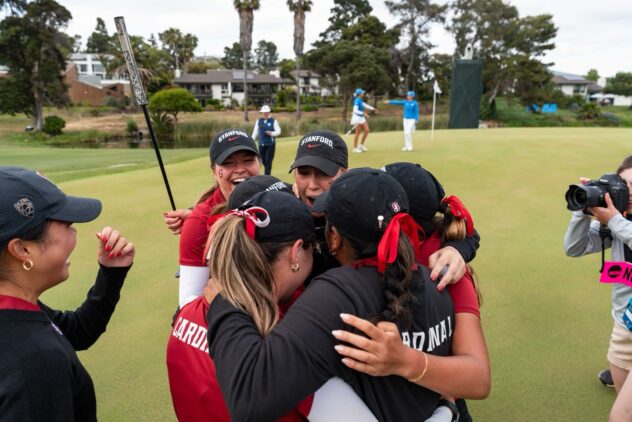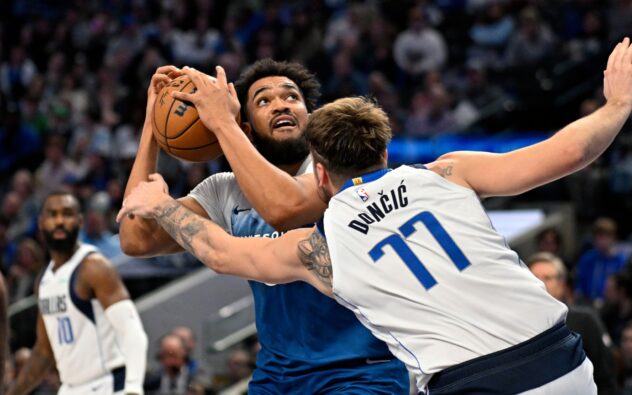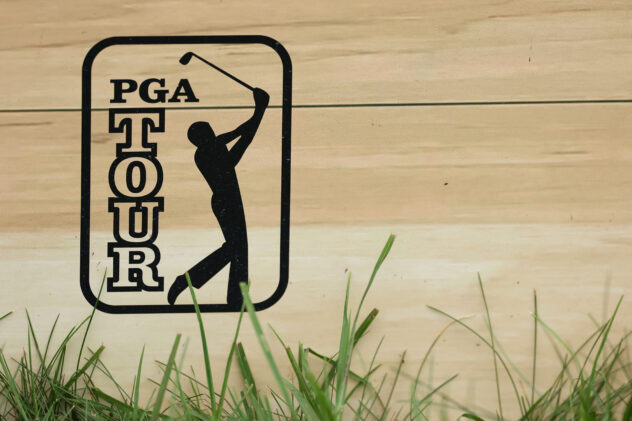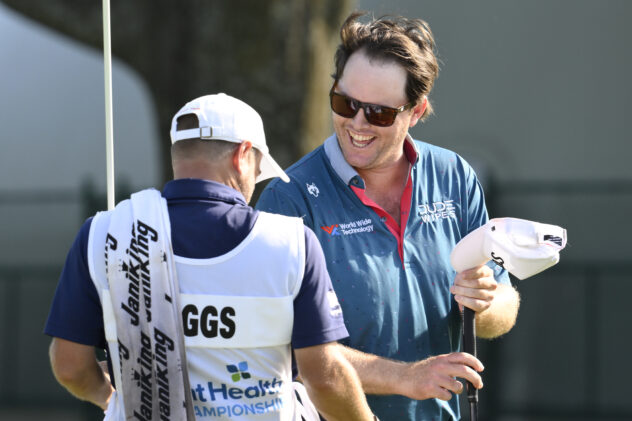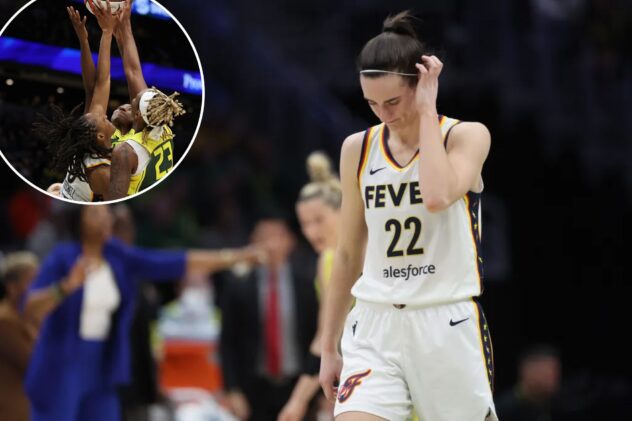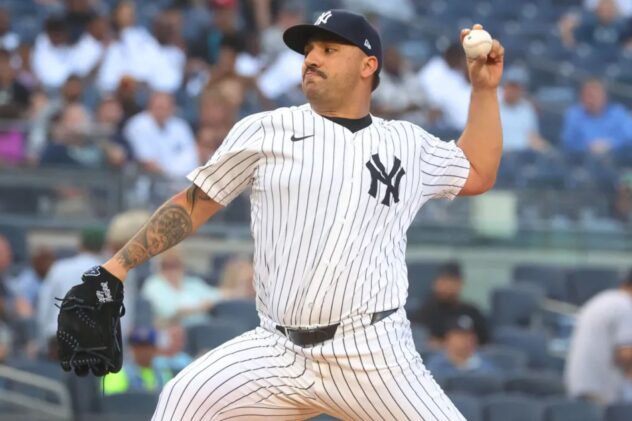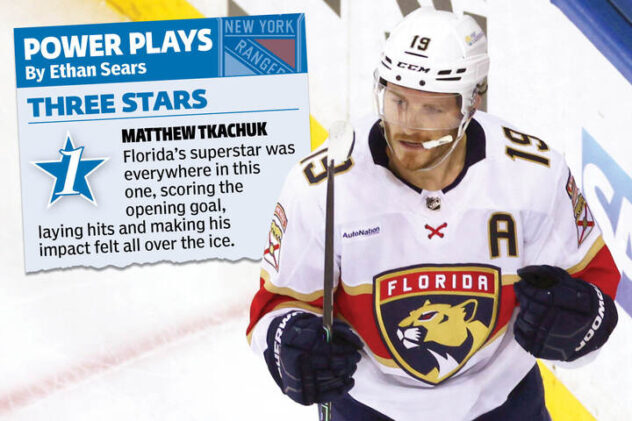No fun on 15: Wind, length have taken excitement out of Augusta National’s final par 5
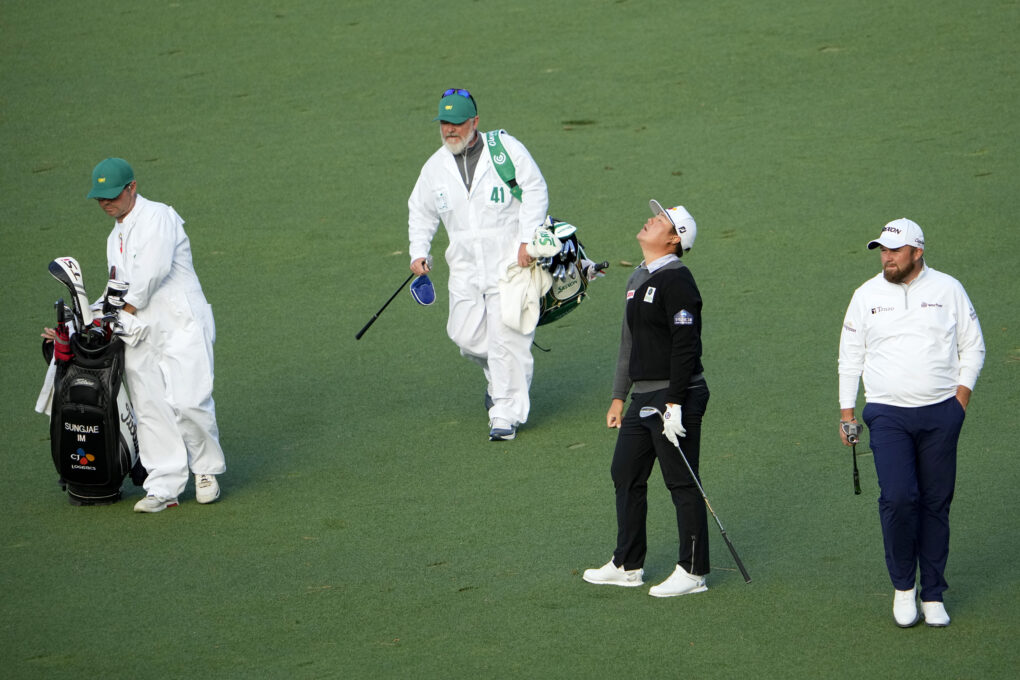
AUGUSTA, Ga. — The 15th at Augusta National entered golf history with a blast in 1935, as Gene Sarazen holed his second shot for an albatross in the final round and won the second Masters Tournament in a 36-hole playoff the next day.
The par 5, stretched to 550 yards this year, has remained one of golf’s most dramatic holes since. Eagles and birdies on Sunday afternoons have helped Masters contenders become champions. Pars have stunted momentum. Bogeys and doubles have ended green jacket dreams.
Through 54 holes this year, though, the additional 20 yards and extreme weather conditions eliminated most of the risk-reward drama from 15. The second-easiest hole in tournament history has played to a 4.97 stroke average as the most difficult of the course’s four par 5s this week and fourth easiest hole overall. With a cold wind howling in the players’ faces on Saturday, a simple par felt like a small victory for the world’s best.
“Everybody has to deal with it,” Justin Thomas said after an even-par 72 left him tied for seventh. “You’re not going to see many 3s but man, that wedge shot is so hard. It’s hard to explain how hard that wedge shot is today. There’s not many par 5s I’m somewhat pleased with a 5 walking off, but today was one of them.”

Sungjae Im reacts to his approach shot as Shane Lowry walks by on No. 15 during the third round of The Masters at Augusta National Golf Club. (Photo: Adam Cairns-Augusta Chronicle/USA TODAY Sports)
To his point, three of the top eight on the leaderboard through 54 holes made bogey on 15 on Saturday and none made birdie.
“It’s just blustery. There’s no easy birdies,” Rory McIlroy said. “Even the par 5s aren’t — usually they’re sort of, not guaranteed 4s, but you feel like they’re holes that you would likely pick shots up on. The way the wind’s blowing, sometimes 5’s a good score and you just move on.”
Masters: Sunday tee times
Even with the tee markers placed toward the front of the new box in the third round, only 19 of 52 players attempted to reach the green in two shots, and just four were successful. For the first time this week, laying up short of the pond in two shots led to lower scoring. The golfers going for the green in two had an average score of 5.21 while those who laid up averaged 5.0.
With a stiff west wind peppering Augusta National the first three days, only 65 players have attempted to reach the green with their second shot. Just 12 were successful in finding the putting surface. Nobody has recorded an eagle at 15 and there have been 54 birdies, compared to 111 in last year’s tournament.

Collin Morikawa chips onto the No. 15 green during the third round of The Masters golf tournament at Augusta National Golf Club. Mandatory Credit: Danielle Parhizkaran-Augusta Chronicle/USA TODAY Sports
During the first two days, being aggressive led to lower scoring. On Thursday the 20 golfers who tried averaged 4.55 on the 15th while those who laid up averaged 4.9. The gap narrowed in the second round as the wind speeds increased. Those going for the green in two averaged 4.65 compared to 4.92 for the three-shot majority.
Golfers have needed a tee shot of at least 290 yards into the wind to even consider trying to launch their second shot over the pond. In the third round, only five players reached that distance off the tee.
Earlier in the week, competitors and caddies agreed they’d be reluctant to go for the green on their second shot if a long iron or fairway metal was required. The firm, tabletop green is defended by water and a steep bank in front and leaves a tricky pitch (or possibly more water) for golfers who go deep on their second shot.

In recent years, the game’s most powerful players have grown accustomed to hitting mid to short irons into the green for their second shot. Such an assault prompted Augusta National officials to lengthen the hole, in an attempt to restore the its integrity of the hole. In the 1970s and 1980s, it wasn’t unusual to see contenders fire a 2-iron or 4-wood second shot toward the green.
Short-iron second shots aren’t ideal, but 15 as a 3-shot hole may be worse. Occasionally a contender may stumble at the par-3 16th – as Xander Schauffele did a year ago – but typically the 15th is the last chance for a three- or even four-shot swing as the shadows grow long and the sun filters through the pines with the green jacket hanging in the balance.
There could be help on the way, however.
The fairways should be firmer, another day removed from the five inches of rain that fell Tuesday and Wednesday. More seasonable weather and lighter winds are in the forecast for Sunday.
The combination should allow longer drives and more decisions for those chasing Scottie Scheffler, or whoever is leading the Masters midway through the second nine. Those roars — and groans — on the 15th hole have been muffled for most of the first three rounds.
It will be a strange Sunday at Augusta without them.

